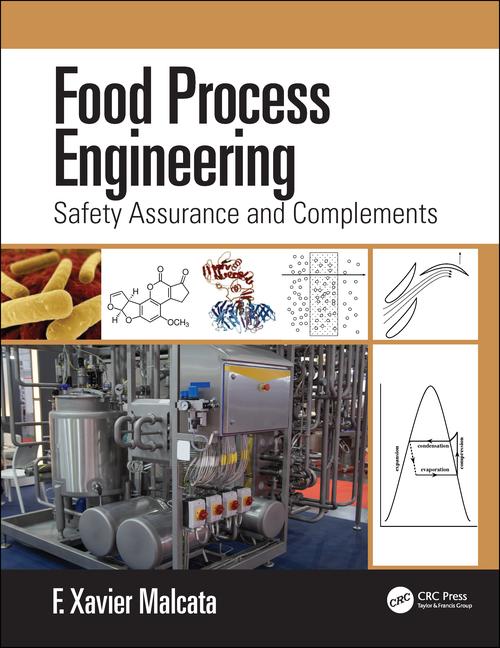Food Safety
Don’t overlook the role of handwashing in food safety

Using a gel or oil that reacts to ultraviolet light can show employees how dirty their hands are.
Photo courtesy of Getty Images
Handwashing is an essential element for ensuring food safety, whether food is being processed or handled in a plant, prepared in a restaurant or foodservice outlet, or cooked at home.
If one looks at food poisoning outbreaks over the years, one will find that a significant number could be attributed to improper handling of food by employees. This is especially true when one looks at hepatitis outbreaks traced back to restaurants. In these cases, an infected food handler is usually found to have contributed to the outbreak via the fecal to oral route. Hepatitis is somewhat insidious, as an infected food handler who can transfer the virus may well be asymptomatic, which provides an impetus for ensuring workers practice good handwashing.
If we go back more than 100 years, we come across the infamous Typhoid Mary. Mary was a chronic carrier of salmonella who unfortunately was a cook. Her employment history dovetailed with a parade of sick people at each location at which she was employed. Mary obviously did not practice good handwashing.
It is a given that handwashing is a necessary prerequisite for food safety. So, how does a company or restaurant develop, document, implement and maintain a program to meet this goal? Consider using the acronym STAR C to remember the basics of goods handwashing:
- S – Supply
- T – Training/Education
- A – Area
- R – Ratio
- C – Compliance
Let’s look at these elements.
Supply
Supply may be simply defined as obtaining the necessary supplies to ensure that food plant workers or restaurant workers can wash their hands. The first step for handwashing compliance is to obtain proper handwashing sinks or units. (The term units is used because there are handwash systems available that are not sinks.)
What characteristics should a handwash sink or unit have? Sinks should be hands-free, activated by foot or knee or an electric eye. If a company selects handwash sinks that have electric eyes, it is imperative that changing the batteries be incorporated into the maintenance management program. When selecting a handwash sink, consider visiting other plants or restaurants to look at what kind of sinks they are using and how their workers like these systems. Handwash systems may be obtained from companies such as Nelson-Jameson or Koch Supply, or even Amazon.
There are high-end automatic handwash systems. Plant workers or kitchen workers simply insert their hands, usually up to the elbows, into the unit that automatically starts the wash cycle. Hands are washed, rinsed and sanitized and often dried within 15-20 seconds. These units utilize warm water that makes the experience quite comfortable for the user. These units are more expensive than regular handwash sinks and often require specific chemicals. One prominent manufacturer is Meritech.
Once the sinks have been installed, it is up to the processor or restaurant to ensure that they are properly supplied. Those supplies include warm water (who hasn’t observed an auditor turning on one of your handwash sinks and counting to see how long it takes warm water to flow), soap, a means to dry hands and, depending upon the operation, a hand sanitizer. Soap dispensers, towel dispensers, air dryers for hands and sanitizer dispensers should also be hands-free. If hand towels are used, a waste bin must be located adjacent to the towel dispenser. Warm water is not a requirement, but it is a best practice. Warm water enhances the efficiency of handwashing. It helps melt fat on hands, enhances the creation of lather and makes the process more comfortable. If one asks people to wash their hands in cold water in midwinter, they might not do a proper job.
Processors and restaurant operators must develop, document and implement a program whereby supplies for every sink are checked on a regular basis and properly documented.
Training/education
All new employees should receive an orientation. One subject that must be addressed with all, even office workers, is handwashing. The handwashing session should not only emphasize why handwashing is important, but should also address how the hands should be washed using the handwash station in the plant. As part of this exercise, new employees must be given the opportunity to practice. Some facilities have even incorporated reminders as to how to properly wash hands. Once a worker has lathered up his or her hands, they are instructed to sing the “Happy Birthday” song to themselves. This takes 15-20 seconds, which should be enough time to get their hands cleaned. The last element that the educational process for handwashing needs to address is when employees must wash their hands. Requirements should include but need not be limited to the start of the workday, after every break, each time they use the toilet, each time they handle something that might not be clean, and whenever they scratch their nose. The bottom line is that most food plant workers and restaurant people will probably end up washing their hands 10 times a day or more.
As part of this session, processors and restaurant operators should consider using tools such as GLO-GERM oil or gel to demonstrate how effectively (or ineffectively) people washed up. This product glows under ultraviolet light. Workers rub the gel or oil into their hands as they would a hand cream, wash up and then expose the hands to the UV light source. If they have not washed up properly, the residual GLO-GERM product will fluoresce. Another useful tool is to have workers touch petri dishes containing a nutrient agar or dextrose tryptone agar with their fingers before and after handwashing. Bacteria on the fingers will be transferred to the agar and grow out after a day or so, showing people that their hands are not clean.
Area and ratio
Let’s combine area and ratio because they go hand-in-hand. Area is defined as the location for the handwash stations. Sinks or units should be at each and every access point to the production floor. The main employee access must include sinks. In addition, handwash sinks or units should be available at various locations throughout the production area. Hands get soiled while working, and it is imperative that handwash stations be conveniently located for the workforce. If there is a long walk to a handwash station, there is a good chance that the person will forego cleaning up because of the distance.
Ratio means that there are enough handwash stations to ensure that everyone can wash their hands when necessary, especially at the main employee entrance. If there are not enough handwash stations, people may simply bypass them rather than wait in line. The USDA-FSIS has established guidelines for toilet facilities and the number of workers (see chart). These guidelines may also be applied to handwash stations. Some processors stagger workers’ start times so there will be open sinks as people come into the plant.
Compliance
Compliance is the last step for the handwashing program. Are you doing what you have said you are going to do in the documented procedures?
This is the verification activity. A company checks regularly to ensure that each handwash station is properly supplied and is working. In addition, maintenance needs to include the handwash station on its schedule. Ideally, battery-operated electric eyes should be changed before they fail.
Handwashing is especially important if a processor is manufacturing ready-to eat (RTE) foods, such as smoked fish, deli meats, salads, fresh cut produce or dips. In these operations, the HACCP or food safety team may determine handwashing to be a preventive control.
Remember STAR C and follow its principles.
For more information:
GLO-GERM, www.glogerm.com
Meritech, www.meritech.com
Nelson-Jameson, www.nelsonjameson.com
Koch Supplies, www.bunzlpd.com
Looking for a reprint of this article?
From high-res PDFs to custom plaques, order your copy today!







